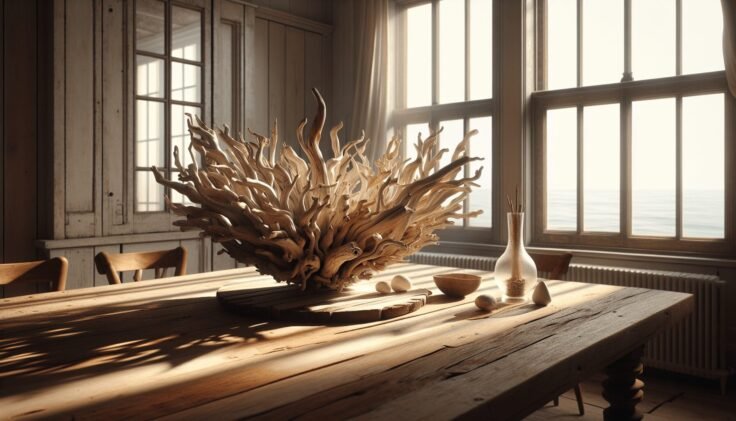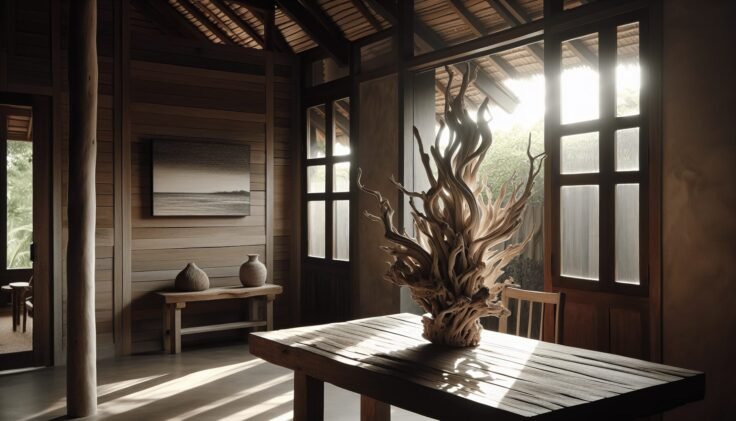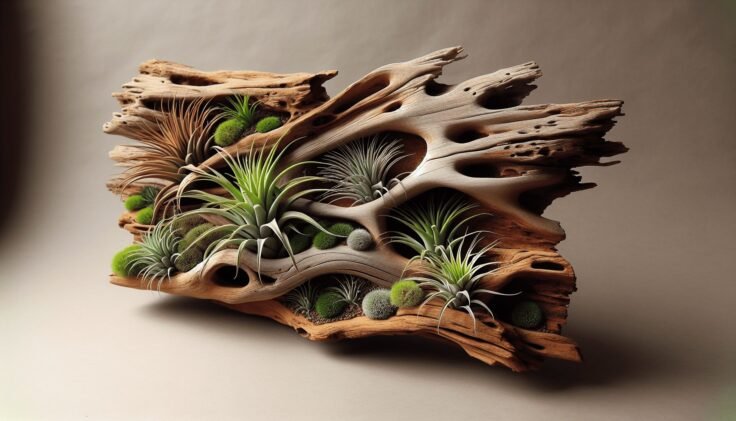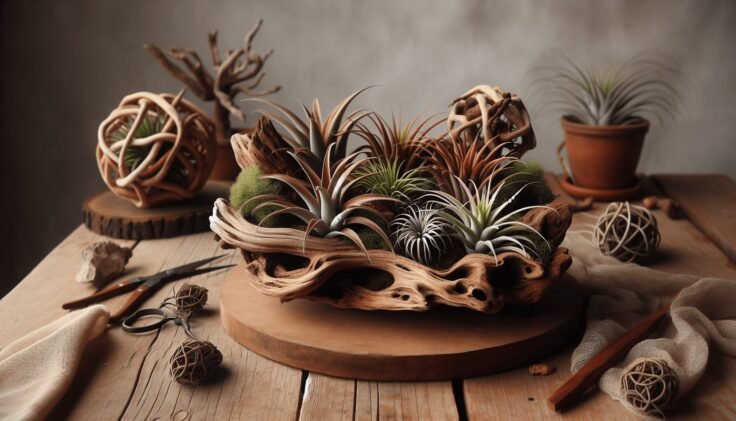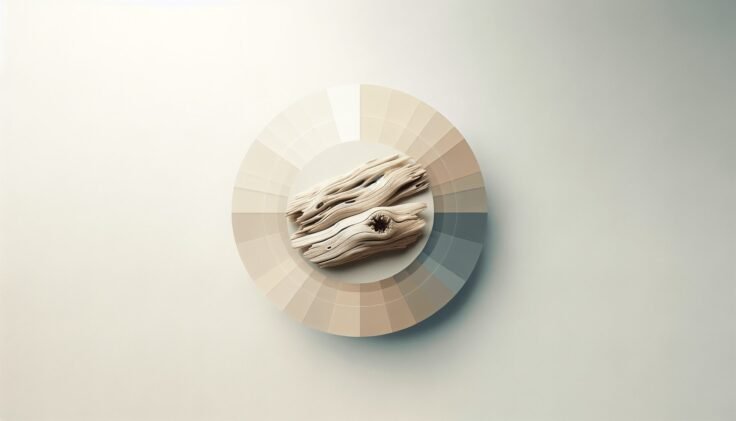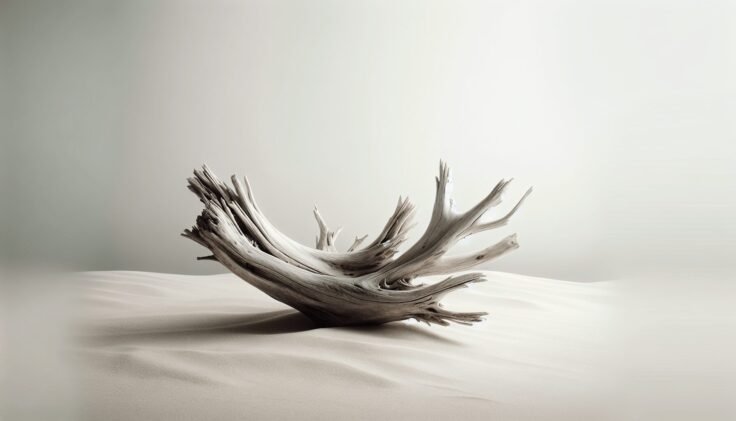Have you ever wondered how air plants can transform a piece of driftwood into a stunning piece of living art? Air plants, scientifically known as Tillandsia, are fascinating because they can grow without soil, deriving moisture and nutrients from the air around them. These unique plants can easily be mounted on driftwood, creating a natural aesthetic that blends seamlessly into home decor. Let’s embark on a journey to discover the beauty and mystery behind air plants on driftwood, uncovering tips, benefits, and creative ideas along the way.
Understanding Air Plants
Before you start attaching air plants to driftwood, it’s essential to understand what they are and how they thrive. Air plants belong to the Bromeliaceae family and are native to forests, mountains, and deserts of Central and South America. Unlike typical plants, they do not rely on soil. Instead, they have specialized leaves that allow them to absorb everything they need from the air.
Characteristics of Air Plants
Air plants are incredibly diverse, coming in a range of shapes, sizes, and colors. Most air plants have slender, grass-like leaves, while others may have broader paddle-style leaves. Despite their varied appearances, all air plants share the ability to attach to surfaces and thrive with minimal water and indirect light.
Benefits of Using Air Plants
Air plants are not only beautiful but also practical. They are easy to care for, requiring no soil and only moderate watering. Additionally, they help purify indoor air by absorbing toxins. This makes them an ideal choice for anyone looking to add greenery to their space without the hassle of traditional plant care.
Selecting and Preparing Driftwood
Choosing the right piece of driftwood is crucial for creating a visually appealing and sustainable environment for your air plants. Driftwood is naturally textured and uniquely shaped, adding to the artistry of the arrangement.
Types of Driftwood
There are various types of driftwood you might consider:
- Hardwoods: Durable and resistant, suitable for long-term plant displays.
- Softwoods: Lightweight and easier to shape, though they may not last as long.
- Manzanita: Known for its twisted, intricate designs, great for creating a natural look.
- Spiderwood: Offers a more exotic appearance with its branched structure.
Preparing Driftwood for Air Plants
Before using driftwood as a base for air plants, you need to ensure it is clean and safe. First, scrub the wood to remove any debris and rinse it thoroughly with water. If you’re concerned about pests or salt, soaking the driftwood in fresh water for a few days can help. Afterwards, let it dry completely to prevent rot or mold.

Mounting Air Plants on Driftwood
Once you have your driftwood and your chosen air plants, it’s time to put them together. This process is simple and allows for creativity and personal expression.
Choosing the Right Air Plants
Consider the size and shape of both your driftwood and air plants. Larger plants can be focal points, while small ones can fill in gaps or complement the shape of the driftwood.
Attaching Air Plants
To attach air plants to driftwood, you can use:
- Wire: Thin, flexible wire can secure plants without causing harm.
- Hot Glue: Safe for plants if used sparingly. Apply a small dot on the base of the plant and press onto the driftwood.
- Fishing Line: Nearly invisible and effective for wrapping around plants to hold them securely.
Arrangement Tips
Create a balanced look by considering the overall silhouette of your driftwood. Group plants with similar color schemes, or mix textures for diverse interest. Place larger plants in central positions, with smaller ones scattered to create a natural effect.
Caring for Air Plants on Driftwood
While air plants require minimal maintenance, proper care ensures they remain healthy and vibrant. Here are some essential tips to keep your display thriving.
Watering
Air plants need to be watered once a week, either by misting them with a spray bottle or soaking them in water for about 20 to 30 minutes. After watering, allow them to dry upside down to prevent water from collecting in the base and causing rot.
Lighting
Provide bright, indirect light. Direct sunlight can scorch the plants, while too little light will stunt their growth. If natural light is insufficient, consider using fluorescent or LED grow lights.
Fertilizing
Feeding is optional but can enhance growth and blooming. Use a bromeliad or air plant fertilizer diluted to half strength once a month.
Seasonal Adjustments
In drier seasons or climates, you might need to water your air plants more frequently. Additionally, during the growing season (spring and summer), they will benefit from slightly more frequent nutrient intake.

Troubleshooting Common Problems
Just like any other plant, air plants may face challenges. Here are some common issues you might encounter and how to tackle them.
Leaf Discoloration
If your plants develop brown or black tips, it might indicate overwatering or dehydration. Ensure proper watering techniques and adjust the frequency based on your environment.
Base Rot
Base rot occurs when water collects at the plant’s base and doesn’t dry out. If you notice soft, darkened areas, remove the affected leaves and let the plant dry thoroughly.
Lack of Growth or Blooms
If an air plant is not growing or blooming, it might need more light or nutrients. Adjust positioning under optimal lighting conditions and consider adding a diluted fertilizer to their care regimen.
Getting Creative with Air Plants on Driftwood
Your options are limitless when it comes to designing with air plants and driftwood. Here are some creative ideas to inspire your installations.
Vertical Gardens
Use a large piece of driftwood as a vertical garden base, attaching air plants along its length. Hang this on a wall for a striking feature piece.
Tabletop Centerpieces
Create a tabletop arrangement using smaller driftwood pieces and an assortment of air plants. Add elements such as stones, shells, or other natural materials to complement the display.
Hanging Sculptures
Use fishing line to suspend driftwood from the ceiling with air plants attached, creating hanging sculptures that add a dynamic and whimsical touch to any room.
Inspiring Examples from Nature
Nature itself is often the best source of inspiration. Observe how air plants grow in their native habitats, attaching to trees, rocks, and shrubs without competing for soil resources.
Natural Growth Patterns
Notice how air plants cling naturally to tree branches and cliffs. Mimic these organic patterns in your designs.
Seasonal Transformations
Air plants change throughout the year, with many developing striking colors or blooms at different times. Incorporate these transformations into your arrangements for evolving displays that stay fresh year-round.
Benefits of Air Plant Illustrations
Integrating air plants with driftwood isn’t just about visual appeal. There are numerous benefits, both practical and ecological.
Enhancing Ambiance
The natural theme enhances any room’s ambiance, bringing a sense of calm and connection to nature.
Improving Air Quality
Air plants contribute to air purification, making indoor environments healthier by removing toxins.
Minimal Maintenance
For those with busy schedules or limited outdoor space, air plants on driftwood offer a maintenance-friendly way to enjoy greenery in your home.
Conclusion
Air plants on driftwood embody the simplicity and serenity found in nature. They provide an easy, artistic means to incorporate greenery into your environment without the fuss of traditional plants. By understanding their needs and exploring creative arrangements, you can curate captivating displays that enchant the eyes and soothe the soul. As you embark on this journey, remember that the beauty lies in both the natural simplicity and the endless possibilities these living masterpieces offer.


